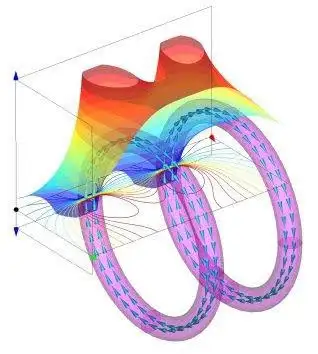Arc Flash Training Certification
By R.W. Hurst, Editor

NFPA 70e Training - Arc Flash
Our customized live online or in‑person group training can be delivered to your staff at your location.

- Live Online
- 6 hours Instructor-led
- Group Training Available
Download Our OSHA FS3529 Fact Sheet – Lockout/Tagout Safety Procedures

- Learn how to disable machines and isolate energy sources safely
- Follow OSHA guidelines for developing energy control programs
- Protect workers with proper lockout devices and annual inspections
Arc Flash Training Certification ensures NFPA 70E compliance, OSHA-aligned electrical safety, PPE selection, and hazard analysis skills, including incident energy evaluation, arc-rated clothing requirements, and LOTO procedures for qualified electrical workers and engineers.
What Is Arc Flash Training Certification?
A credential verifying NFPA 70E competence in arc-flash risk assessment, PPE selection, and OSHA-compliant safety.
✅ Covers NFPA 70E, OSHA, and IEEE 1584 risk assessment methods
✅ Teaches PPE category selection, arc-rated clothing, and labeling
✅ Emphasizes LOTO, energized work permits, and incident energy limits
Arc flash training certification is crucial for ensuring the safety of employees who work with or near electrical equipment. This training, mandated by various OSHA regulations, helps workers understand the hazards associated with electrical work and how to protect themselves. This article explores the requirements, benefits, and objectives of arc flash training certification. For foundational context on electrical work hazards and controls, see this concise overview of electrical safety training principles and best practices.
Request a Free Training Quotation
Is Arc Flash Training Required?
Yes, arc flash training is required. OSHA regulations, specifically under 29 CFR 1910 Subpart S and 29 CFR 1926 Subpart K, mandate that employees exposed to electrical hazards receive appropriate training. These regulations apply to general industry and construction sectors, ensuring that workers are aware of the risks and the measures needed to create electrically safe work conditions. Employers can align policies with OSHA by reviewing these summarized OSHA arc flash requirements and implementing them consistently.
Benefits of Arc Flash Training Certification
The benefits of arc flash training certification are numerous:
-
Improved Safety: Training ensures that workers understand the dangers of electrical work and the importance of creating an electrically safe work condition. This knowledge helps prevent accidents and injuries.
-
Compliance with Regulations: Certification helps organizations comply with OSHA 29 CFR regulations, avoiding potential fines and penalties. Cross-referencing OSHA obligations with the latest NFPA 70E training requirements helps close gaps in documentation and practice.
-
Enhanced Skills: Employees gain practical skills in using personal protective equipment (PPE) and implementing safe work practices. Many teams reinforce these competencies through structured arc flash safety training that includes simulations and scenario-based exercises.
-
Reduced Downtime: Proper training reduces the likelihood of electrical incidents, which can cause significant downtime and productivity losses.
-
Increased Awareness: Workers become more aware of the hazards and the importance of following safety protocols, contributing to a safer work environment.
Test Your Knowledge About Arc Flash!
Think you know Arc Flash? Take our quick, interactive quiz and test your knowledge in minutes.
- Instantly see your results and score
- Identify strengths and areas for improvement
- Challenge yourself on real-world electrical topics
Who Needs Arc Flash Training Certification?
Arc flash training certification is necessary for all employees who work with or near electrical equipment. This includes electricians, maintenance personnel, engineers, and any workers involved in tasks that could expose them to electrical hazards. Both new hires and experienced employees must undergo training to ensure they are updated on the latest safety standards and practices. For role-specific guidance, this resource outlines who needs arc flash training across job functions and industries.
Requirements for Arc Flash Training
The requirements for arc flash training include: Organizations can benchmark their programs against published arc flash training requirements to ensure completeness and consistency.
-
Understanding Electrical Hazards: Training must cover the nature of electrical hazards, including the causes and consequences of arc flash incidents.
-
Safe Work Practices: Employees must learn the procedures for establishing electrically safe work conditions, including lockout/tagout procedures.
-
Use of PPE: Proper selection, use, and maintenance of personal protective equipment (PPE) must be taught to protect against electrical hazards.
-
OSHA and NFPA Standards: Training should include information on relevant OSHA regulations and NFPA 70E standards, which provide guidelines for electrical safety in the workplace.
-
Practical Training: Hands-on training is essential to ensure that employees can apply what they have learned in real-world scenarios.
How Often Should Arc Flash Training Be Updated?
Arc flash training should be updated at least every three years, as stipulated by NFPA 70E. However, more frequent updates may be necessary if there are changes in job assignments, new equipment introduced, or if an employee is found to be working unsafely. Regular updates ensure that workers remain knowledgeable about the latest safety practices and regulatory changes. Referencing a current NFPA 70E arc flash training guide supports timely revisions and audit readiness.
Objective of Arc Flash Training
The primary objective of arc flash training is to equip employees with the knowledge and skills needed to work safely with electrical equipment. This includes understanding the hazards, knowing how to create electrically safe work conditions, and using personal protective equipment correctly. The training aims to reduce the risk of electrical injuries and fatalities, promoting a culture of safety within the organization.
Importance of Risk Assessments
Arc flash training also emphasizes the importance of conducting risk assessments. These assessments identify potential electrical hazards and determine the necessary protective measures. By understanding the risks, organizations can implement appropriate controls to protect employees. Risk assessments should be an integral part of any safety program, ensuring that all potential hazards are addressed.
Online Training Options
In today's digital age, online training has become a popular option for delivering arc flash safety training. Online training offers flexibility and accessibility, allowing employees to complete courses at their own pace and convenience. Many reputable providers offer comprehensive online training programs that cover all aspects of electrical safety, including the proper use of PPE and safe work practices.
Arc flash training certification is essential for anyone working with or near electrical equipment. It ensures compliance with OSHA regulations, enhances worker safety, and promotes a culture of safety in the workplace. Regular training updates and risk assessments are crucial components of an effective safety program. By investing in proper training, organizations can protect their employees and minimize the risks associated with electrical work.
Understanding the requirements, benefits, and objectives of arc flash training is vital for maintaining a safe working environment. Whether through traditional classroom settings or online training courses, ensuring that all employees receive proper training is a critical step toward achieving workplace safety.








